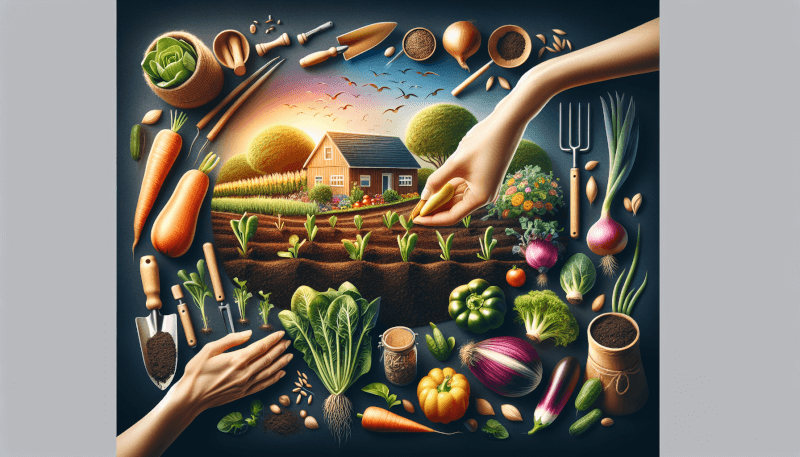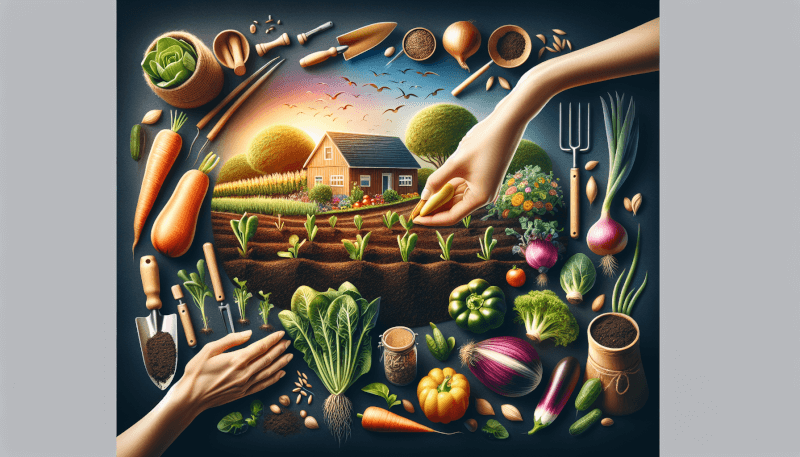Are you looking to develop your green thumb and start growing your own fresh vegetables at home? Look no further! This article will provide you with practical and easy-to-follow tips on the top ways to cultivate your own delicious produce right in your backyard. Whether you have limited space, a busy schedule, or are a beginner in gardening, we have got you covered. Get ready to transform your outdoor space into a thriving vegetable garden and savor the joy of harvesting your own homegrown goodness.
1. Container Gardening
Container gardening is a convenient and space-efficient way to grow your own vegetables at home. Whether you have a small balcony, patio, or even just a windowsill, container gardening allows you to enjoy the benefits of having fresh vegetables right at your fingertips. Here are some key aspects to consider when starting your own container garden:
Choosing the right containers
When it comes to selecting containers for your vegetable garden, there are a few factors to keep in mind. First and foremost, choose containers that are spacious enough to accommodate the root systems of your chosen vegetables. The containers should also have adequate drainage holes to prevent waterlogging and promote healthy plant growth. Additionally, choose containers made of durable materials like plastic, clay, or wood, ensuring they are suitable for outdoor use and can withstand various weather conditions.
Selecting the appropriate location
The location of your container garden is crucial for the success of your vegetables. Most vegetables require at least six hours of direct sunlight per day, so choose a spot that receives ample sunlight. If you have limited space, consider using containers that are easy to move around, allowing you to follow the sun throughout the day. Moreover, ensure your chosen location is easily accessible for watering and maintenance purposes.
Choosing the right vegetables
Not all vegetables are suitable for container gardening, so it’s important to choose varieties that thrive in small spaces. Some vegetables that are well-suited for container gardens include tomatoes, peppers, lettuce, radishes, herbs, and even compact varieties of carrots and cucumbers. Selecting the right vegetables based on your preferences and the available space will help ensure a successful container garden.
Providing adequate drainage
To prevent waterlogged roots and promote healthy growth, it’s essential to provide adequate drainage for your container-grown vegetables. This can be achieved by placing a layer of gravel or small stones at the bottom of your containers before adding a high-quality potting mix. This layer will allow excess water to drain away from the roots, preventing rot and disease.
Caring for container-grown vegetables
Container-grown vegetables require regular care and attention to thrive. Regular watering is essential, especially during hot and dry periods. Pay attention to the moisture level of the soil and adjust your watering routine accordingly. Additionally, container plants may require more frequent fertilization compared to those grown in the ground. Be sure to use a balanced organic fertilizer or compost to provide your plants with the necessary nutrients. Regular monitoring for pests and diseases is also crucial for the overall health of your container garden.
2. Raised Bed Gardening
Raised bed gardening is another popular method for growing vegetables at home. It offers various advantages, such as better soil drainage, improved soil quality, and ease of maintenance. Here are the key steps to consider when starting your own raised bed garden:
Building a raised bed
To build a raised bed, you can use materials like wood, concrete blocks, or even repurposed materials. The bed should be at least 6-8 inches deep to provide ample room for root growth. Ensure the width of the bed is such that you can comfortably reach the center from all sides for planting, maintaining, and harvesting your vegetables.
Preparing the soil
One of the advantages of raised bed gardening is the ability to control the quality of the soil. Start by removing any weeds or grass from the designated area. Then, fill the bed with a mixture of high-quality topsoil, compost, and organic matter. This will provide your vegetables with the necessary nutrients and ensure good drainage.
Choosing the right plants
When selecting plants for your raised bed garden, consider the available space as well as the specific requirements of each vegetable. Opt for varieties that are well-suited for the size of your raised bed and take into account factors like sunlight, water needs, and companion planting strategies. Choose a mix of vegetables that will provide a diverse and enjoyable harvest throughout the growing season.
Watering and fertilizing
Proper watering and fertilization are vital for the success of your raised bed garden. The elevated nature of raised beds can result in faster water drainage, so it’s important to monitor the moisture level regularly. Water deeply but infrequently, allowing the soil to dry out slightly between waterings. Additionally, enrich the soil with organic matter and compost to provide your plants with a steady supply of nutrients throughout the growing season.
Weeding and pest control
Regular weeding is essential to prevent unwanted competition for nutrients and space in your raised bed garden. Regularly inspect your plants for any signs of pests or diseases and take appropriate measures to control them. Natural solutions like insecticidal soaps and homemade pest repellents can be effective in keeping pests at bay, while maintaining a healthy balance in your garden ecosystem.

3. Vertical Gardening
Vertical gardening is an innovative and space-saving approach that allows you to maximize your growing area by utilizing vertical space. Whether you have a small balcony or limited ground space, vertical gardening provides a solution by utilizing walls, trellises, and hanging planters. Here’s what you need to know to get started with vertical gardening:
Selecting the right structure
The first step in vertical gardening is choosing the right structure to support your growing plants. Depending on the available space and your preferences, you can opt for trellises, arbors, wall-mounted planters, or even repurposed materials like pallets. Ensure the structure is sturdy enough to support the weight of the plants and allows for adequate airflow and sunlight exposure.
Choosing suitable vegetables
When it comes to vertical gardening, some vegetables are better suited than others. Vine crops like tomatoes, cucumbers, beans, and peas are excellent choices as they naturally climb and sprawl. Additionally, leafy greens, herbs, and small-fruited varieties like strawberries can also thrive in vertical gardens. Choose vegetables that are compact, have strong climbing or trailing tendencies, and are well-suited for the specific growing conditions of your vertical garden.
Managing vertical garden space
Proper planning and organization are key elements to successfully managing vertical garden space. Start by assessing the available area and considering the growth habits and size of your chosen vegetables. Ensure you space the plants accordingly to avoid overcrowding, which can lead to poor airflow and increased susceptibility to pests and diseases. Regularly train and prune your plants to maintain a neat and manageable vertical garden.
Watering and fertilizing
Vertical gardens can have unique watering needs due to their exposed nature and potentially limited soil volume. Regularly monitor the moisture level of your vertical garden and water accordingly. Depending on the structure and planting medium used, you may need to water more frequently than traditional gardens. Additionally, provide your vertical garden with the necessary nutrients by fertilizing regularly. Organic liquid fertilizers or slow-release fertilizers specifically formulated for container gardens work well in vertical gardening.
Controlling pests in vertical gardens
Just like any other type of garden, vertical gardens are susceptible to pests and diseases. Regularly inspect your plants for any signs of infestation, such as discolored leaves, wilting, or chewed foliage. Consider implementing preventative measures like using insecticidal soaps, companion planting strategies, and regular pruning to maintain a healthy and pest-free vertical garden.
4. Hydroponic Gardening
Hydroponic gardening is a unique and efficient method of growing vegetables without soil. Instead, plants are grown in a nutrient-rich water solution, allowing for faster growth and higher yields. If you’re interested in exploring hydroponic gardening, here are the key steps to get you started:
Understanding hydroponics
Hydroponics is the practice of growing plants in a nutrient-rich water solution, without the use of soil. This method utilizes a variety of systems, such as nutrient film technique (NFT), deep water culture (DWC), and aeroponics, to provide the necessary nutrients and support for plant growth. Hydroponic systems can be set up indoors or outdoors, depending on your available space and climate conditions.
Choosing a suitable hydroponic system
There are various hydroponic systems available, each with its own advantages and requirements. Some popular systems include NFT, which involves a constant flow of nutrient-rich water over the roots, and DWC, where plant roots are suspended in a nutrient solution. Research different hydroponic systems and choose one that suits your available space, budget, and growing goals.
Creating a nutrient solution
The key to successful hydroponic gardening lies in providing the plants with a balanced and nutrient-rich solution. Research the specific nutrient requirements of the vegetables you intend to grow and mix a suitable nutrient solution accordingly. Pre-made hydroponic nutrient solutions are also available in the market, making it convenient for beginners.
Monitoring pH and nutrient levels
Regular monitoring of pH levels and nutrient concentrations is crucial in hydroponic gardening. Most plants thrive in slightly acidic to neutral pH levels, so invest in a reliable pH meter or test strips to ensure the pH of your nutrient solution remains within the desired range. Additionally, regularly check and adjust nutrient levels to prevent deficiencies or toxicities in your plants.
Harvesting hydroponic vegetables
One of the advantages of hydroponic gardening is the accelerated growth rate of plants. Depending on the specific vegetables you’re growing, you can start harvesting your hydroponic vegetables sooner compared to traditional soil gardening. Harvesting techniques vary based on the vegetable, so research the appropriate harvesting times and methods to ensure optimal flavor and quality.
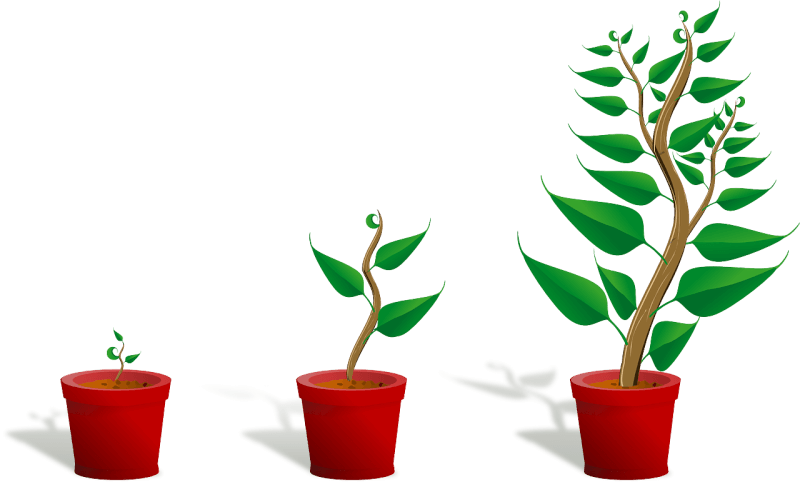
5. Indoor Gardening
Indoor gardening allows you to grow vegetables all year round, regardless of the weather conditions outside. Whether you have a dedicated room, a small corner, or even just a windowsill, you can create a thriving indoor garden. Here’s what you need to know to successfully grow vegetables indoors:
Selecting the right space
When choosing a space for your indoor garden, consider factors like lighting, temperature, and available space. Most vegetables require at least six hours of direct sunlight per day, so place your indoor garden near a sunny window or consider using artificial grow lights. Ensure the space is well-ventilated and provides adequate room for your chosen vegetables to grow.
Providing adequate lighting
Light is one of the most critical factors for successful indoor gardening. In the absence of direct sunlight, invest in high-quality grow lights that provide the necessary spectrum and intensity for plant growth. LED grow lights are a popular choice for indoor gardens due to their energy efficiency and versatility. Adjust the light height and duration based on the specific requirements of your vegetables.
Choosing the right vegetables
Not all vegetables are suitable for indoor gardening, so choose varieties that are well-suited for growing in containers and limited space. Leafy greens like lettuce and spinach, herbs like basil and parsley, and compact varieties of peppers and tomatoes are excellent choices. Research the specific requirements of each vegetable, such as light, temperature, and watering needs, to ensure optimal growth.
Watering and fertilizing
Indoor gardens can have unique watering requirements due to factors like indoor temperature and humidity. Regularly inspect the moisture level of the soil and water your plants accordingly. Avoid overwatering, as this can lead to root rot and other issues. Use a well-balanced organic fertilizer or compost to provide your plants with the necessary nutrients. Indoor plants may require less frequent fertilization compared to outdoor gardens, so follow the recommended application rates.
Controlling temperature and humidity
Maintaining the appropriate temperature and humidity levels is crucial for indoor gardening success. Most vegetables thrive in temperatures between 65-75°F (18-24°C), so aim to keep your indoor garden within this range. Additionally, monitor the humidity levels and adjust as needed. If the air in your home is dry, consider using a humidifier or placing a tray of water near your plants to increase the humidity.
6. Community Gardening
Community gardening is a rewarding way to grow your own vegetables while fostering a sense of community and shared knowledge. By joining or starting a community garden, you can connect with like-minded individuals, learn from experienced gardeners, and contribute to the local food system. Here’s how you can get involved in community gardening:
Finding a community garden
Start by researching community gardens in your area. Check with local gardening clubs, neighborhood associations, or visit online platforms dedicated to connecting gardeners. Reach out to community garden organizers and express your interest in joining or starting a new garden. They can provide valuable information about available plots and any specific guidelines or requirements.
Reserving a plot
Once you’ve found a community garden, reserve a plot that suits your needs. Determine the size of the plot and whether it meets your preferences for vegetable gardening. Some community gardens have waiting lists, so be prepared to wait if there are limited spaces available. Respect any rules or regulations set by the community garden organizers, such as organic gardening practices or shared maintenance responsibilities.
Preparing the soil
Before starting your community garden plot, assess the soil quality and make any necessary improvements. This may involve removing weeds, adding compost or organic matter, and ensuring the soil is well-drained. Collaborate with fellow gardeners and share resources like tools and amendments to collectively improve the overall soil health of the community garden.
Choosing suitable vegetables
When selecting vegetables for your community garden plot, consider factors like available space, sunlight, and water availability. Consult with experienced gardeners or community garden organizers for recommendations on suitable vegetables for your specific location. Opt for a mix of vegetables that provide a diverse harvest and are well-adapted to the local climate and growing conditions.
Collaborating with fellow gardeners
One of the highlights of community gardening is the opportunity to collaborate and learn from fellow gardeners. Engage in conversations with other gardeners, exchange tips and knowledge, and share experiences. Participate in community gardening events, workshops, or workdays to further enhance your gardening skills and contribute to the overall success of the community garden.
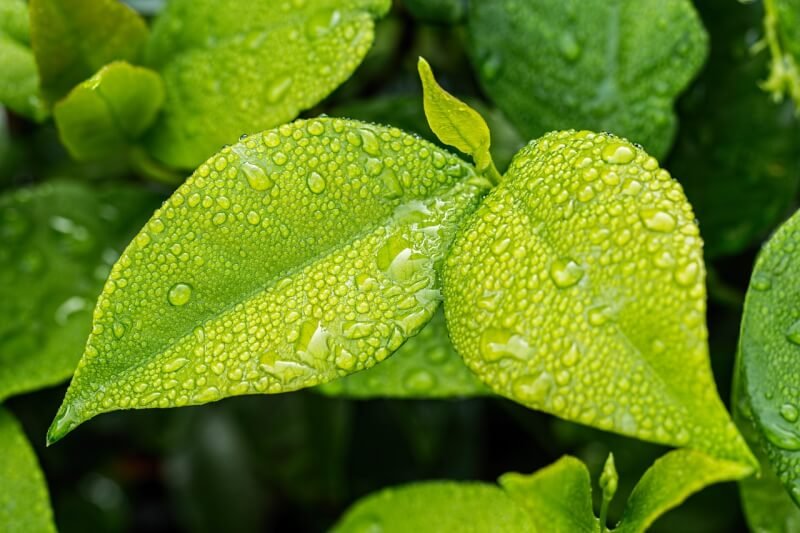
7. Permaculture Gardening
Permaculture gardening is a holistic and sustainable approach to gardening that mimics natural ecosystems to create a thriving and self-sufficient garden. By utilizing permaculture principles, you can create a garden that not only provides abundant harvests but also promotes biodiversity and minimizes environmental impact. Here’s what you need to know to implement permaculture gardening:
Understanding permaculture principles
Permaculture is a design philosophy based on observing and integrating natural patterns and processes into the garden ecosystem. It focuses on principles like mimicking nature, maximizing biodiversity, and reducing waste. Study and understand the core principles of permaculture, such as observation, diversity, and resilience, to guide your garden design and management decisions.
Designing your permaculture garden
Start by analyzing your garden space and observing natural patterns like sun and shade, wind patterns, and water flow. Design your garden to create functional and complementary elements that work in harmony with nature. Integrate features like swales, ponds, and windbreaks to conserve water, enhance soil fertility, and create microclimates. Consider companion planting and polycultures to maximize plant diversity and create mutually beneficial relationships.
Choosing suitable plants
When practicing permaculture gardening, focus on selecting perennial plants whenever possible. Perennials have longer lifespans, require less maintenance, and contribute to building a diverse and resilient garden ecosystem. Look for varieties that are native or well-suited to your specific climate and growing conditions. Incorporate a mix of vegetables, fruit trees, herbs, and flowering plants to attract beneficial insects, birds, and pollinators.
Creating a sustainable ecosystem
Permaculture gardening aims to create a sustainable and self-sufficient ecosystem. Incorporate elements like composting, rainwater harvesting, and natural pest control methods to reduce reliance on external resources and minimize waste. Practice water conservation techniques like mulching and proper irrigation to conserve water and reduce the overall water footprint of your garden.
Maintaining a permaculture garden
Maintaining a permaculture garden involves regular observation, ongoing learning, and adaptation. Continuously assess the health and vitality of your garden ecosystem, be mindful of any imbalances or potential issues, and make adjustments accordingly. Encourage natural processes like decomposition, nutrient cycling, and wildlife habitat creation. Regularly prune and mulch to maintain plant health and optimize resource utilization.
8. Companion Planting
Companion planting is an ancient gardening technique that involves growing different plants close together to maximize growth, deter pests, and enhance nutrient uptake. By strategically pairing compatible plants, you can create a harmonious and mutually beneficial garden ecosystem. Here’s how you can implement companion planting in your vegetable garden:
Choosing compatible plant combinations
Companion planting involves pairing plants that have mutually beneficial growth characteristics. For instance, tall plants can provide shade or act as windbreaks for more delicate plants. Plants with a strong aroma or natural pest-repellent properties can help deter pests from neighboring plants. Research and select compatible plant combinations based on factors like growth habits, nutrient needs, and pest-deterrent properties.
Beneficial companion plants
Certain plants are renowned for their beneficial effects on neighboring plants. Marigolds, for example, release natural compounds that repel pests like aphids and nematodes. Basil can enhance the growth and flavor of tomatoes when grown nearby. Borage attracts pollinators and improves the overall health of neighboring plants. Research and experiment with different beneficial companion plants to find the combinations that work best for your vegetable garden.
Companion planting for pest control
Companion planting can provide a natural and chemical-free approach to pest control. The strong smell or natural compounds released by certain plants can repel or confuse pests, minimizing the need for pesticides. For example, planting garlic or onions near carrots can deter carrot flies. Nasturtiums can attract aphids away from more vulnerable plants. Incorporate pest-repellent plants strategically throughout your garden to create a balanced and naturally resilient ecosystem.
Companion planting for nutrient enhancement
Certain plants have the ability to enhance nutrient uptake or fix nitrogen in the soil, benefiting neighboring plants. Legumes like peas and beans, for example, have a symbiotic relationship with nitrogen-fixing bacteria in their root systems, enriching the soil with nitrogen. Brassicas like cabbage or broccoli can release compounds that inhibit the growth of soil-borne diseases. Incorporate nutrient-enhancing plants into your companion planting strategy to promote overall garden health and productivity.
Implementing companion planting techniques
To implement companion planting effectively, consider factors like available space, plant compatibility, and crop rotation. Intercrop or interplant compatible species in the same bed or garden space, ensuring optimal growing conditions for each plant. Use planting guides or charts specific to companion planting to guide your planting decisions and help you keep track of successful combinations. Regularly monitor the health and progress of your plants and make adjustments or rotate crops as needed.
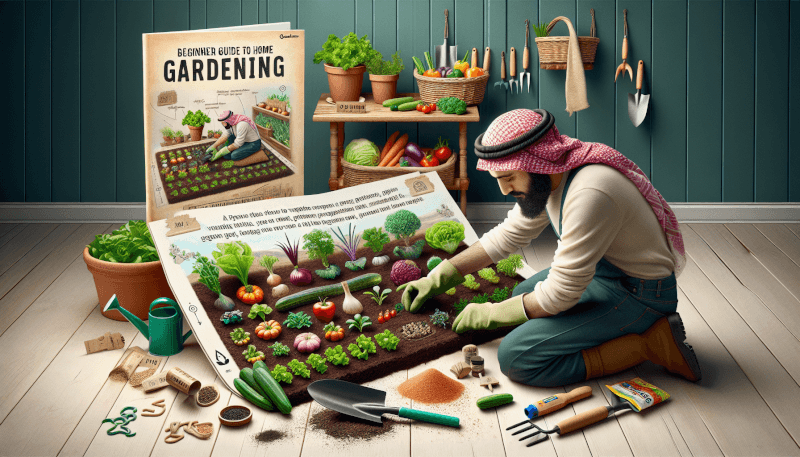
9. Organic Gardening
Organic gardening is an eco-friendly and sustainable approach to growing vegetables without the use of synthetic fertilizers or pesticides. By prioritizing soil health, natural pest control methods, and sustainable practices, you can cultivate a garden that is both productive and environmentally friendly. Here’s what you need to know to practice organic gardening:
Using organic soil amendments
In organic gardening, soil health is of utmost importance. Prioritize the use of organic soil amendments like compost, well-rotted manure, and organic matter to improve soil structure, fertility, and nutrient content. Compost can be made at home using kitchen scraps, yard waste, and other organic materials. Apply compost regularly to replenish soil nutrients and support beneficial soil microorganisms.
Organic pest control methods
In organic gardening, pest control methods focus on prevention and encouraging natural pest predators. Implement physical barriers like row covers or netting to deter pests from reaching your plants. Plant pest-repellent herbs and flowers like marigolds, basil, and lavender throughout your garden. Regularly inspect your plants for signs of pests and hand-pick or prune affected areas. Additionally, encourage beneficial insects like ladybugs and lacewings by providing them with a habitat of flowering plants.
Avoiding synthetic fertilizers and pesticides
A key principle of organic gardening is avoiding synthetic fertilizers and pesticides. Instead, focus on providing your plants with nutrient-rich organic sources like compost, seaweed extract, or organic fertilizers. Organic fertilizers release nutrients slowly, ensuring a steady supply for your plants. Avoid the use of chemical pesticides and opt for organic pest control methods instead.
Composting and recycling
Composting is a fundamental practice in organic gardening. It allows you to recycle kitchen scraps, yard waste, and other organic materials into nutrient-rich compost for your garden. Set up a composting system in your backyard and learn the basics of composting to effectively manage organic waste and return valuable nutrients back to the soil. Additionally, practice recycling and reduce waste in your gardening practices to promote sustainability.
Certifying your garden as organic
If you want to take your organic gardening to the next level, you can consider certifying your garden as organic. This involves adhering to specific guidelines and regulations set by organic certification bodies. Certification provides credibility and assurance to consumers that your vegetables are grown using sustainable and environmentally friendly methods. Research the certification process in your country or region to determine if it aligns with your gardening goals.
10. Seed Starting
Starting your own vegetable seeds is an economical and rewarding way to kickstart your garden. By sowing seeds indoors before the growing season begins, you can extend the growing season, have a wider selection of varieties, and save money compared to buying seedlings. Here’s what you need to know to successfully start seeds:
Gathering necessary equipment
To start seeds indoors, gather the necessary equipment. You will need seed trays or containers with drainage holes, a sterile seed starting mix, seeds, labels, and a watering can or spray bottle. Additionally, consider investing in a grow light or placing your seed trays near a sunny window to provide adequate light.
Selecting high-quality seeds
Choose high-quality seeds from reputable suppliers to ensure good germination rates and healthy plants. Consider factors like the vegetable variety, disease resistance, and suitability for your specific growing conditions. Read seed packets or catalogs carefully to understand the specific requirements for each vegetable.
Preparing seed starting mix
Start by preparing a sterile seed starting mix to ensure clean and disease-free conditions for your seeds. Seed starting mixes are typically light and well-draining, providing the ideal environment for germination. You can purchase pre-made mixes or create your own by combining ingredients like peat moss, vermiculite, and perlite. Moisture the mix before filling your seed trays or containers.
Sowing the seeds
Follow the instructions on the seed packets for proper sowing depth, spacing, and temperature requirements. Place one or two seeds per cell or container, ensuring they are covered with the appropriate depth of seed starting mix. Write labels with the vegetable names and sowing dates to keep track of your seedlings. Water gently after sowing to settle the soil around the seeds.
Transplanting seedlings
Once your seedlings have developed a few sets of true leaves and are robust enough, it’s time to transplant them into larger containers or directly into the garden. Harden off your seedlings by gradually exposing them to outdoor conditions over a period of days to minimize transplant shock. Dig holes or prepare containers in the garden with the appropriate spacing for each vegetable and gently transplant the seedlings, taking care not to damage the delicate roots.
Starting your own vegetable garden at home can be a rewarding and fulfilling experience. Whether you choose container gardening, raised bed gardening, vertical gardening, hydroponic gardening, indoor gardening, community gardening, permaculture gardening, companion planting, organic gardening, or seed starting, each method offers unique benefits and opportunities for you to grow your own fresh and delicious vegetables. By following these guidelines and putting in a little time and effort, you’ll soon be enjoying the bountiful harvests of your own homegrown vegetables. Happy gardening!
